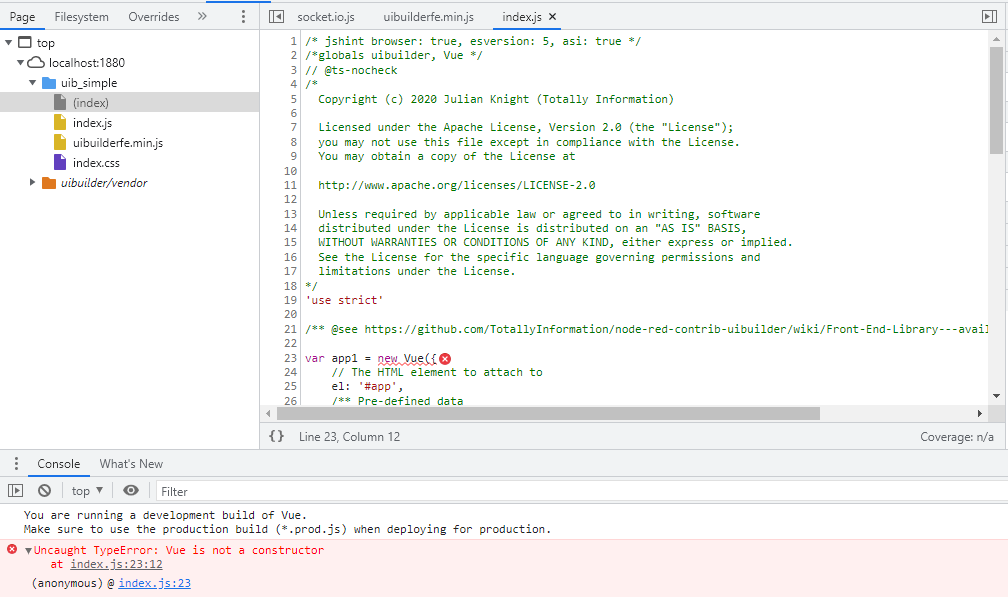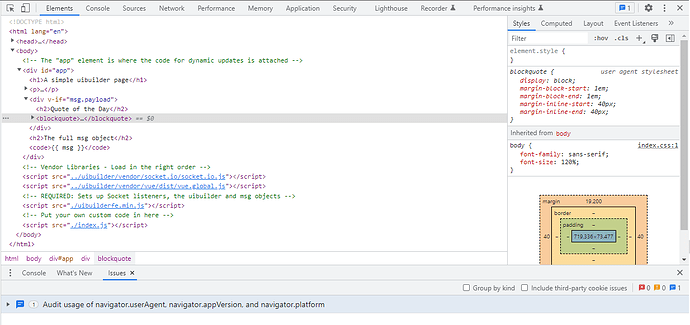Vue v3 is quite a different beast to Vue 2 unfortunately and I've not had time to work up many examples yet. I do have one very basic example worked up for the uibuilder v6.1 release - I think it should work under uibuilder v6.0 as well, can't think of a reason why not. Let me know if you want it but it really is a very simple example.
Yes, Vue v3 is pretty new.
Hard to give you too much direction without knowing the kinds of things you are likely to want to build.
But at present, I am more focused on what can be achieved without a framework. I keep seeing the frameworks go off at tangents and increase in complexity as they mature. At the same time, HTML/CSS is maturing too and as long as you are happy ignoring older browsers, I feel that is possibly the way to go if only to help future-proof what you might be building.
If you do need to account for old browser versions or if you need to stretch beyond what is currently achievable with pure HTML/CSS/JS, they I would suggest looking at a framework that has a stated intent to complement pure HTML rather than replace it.
For example, Svelte is quite easy to pick up and is capable of building HTML Components. There are one or two other frameworks with similar aims but Svelte is not only easy to work with, it is fast and has the advantage that, whilst it does need a build step, it's dev server with live reload (a real boon while developing with build steps) is fully compatible with uibuilder.
However, if you have the time and inclination, I would certainly recommend learning at least the basics of what you can do directly on the DOM with pure HTML, CSS and JavaScript along with the help that the new uibuilder client gives you. I'll be continuing to extend the vanilla HMTL capabilities of uibuilder with features that will let you continue to reduce the amount of code you need to write so that you can get started quicker even if you eventually end up writing custom code. One of the things I see as a tremendous benefit of uibuilder is that it lets you get things done but does not tie you to a framework - instead, you can progressively enhance your web apps. Starting with the simple builder capabilities developed so far but then allowing you to continue to extend and add value using the HTML that is built for you. You can't do that really with any of the other Node-RED dashboards without knowing a reasonable amount about the specific framework that is being used.
So in summary, if your needs really are quite simple, vanilla HTML/CSS/JS is the way to start I personally think. Then if you really need to, you can further enhance with a compatible framework that builds HTML components. But for simple things, I think that unlikely.
What I'd also be interested in is hearing about what you want to (and do) build. Because I certainly want to extend the auto-build features such as the experimental uib-list node (that is going to be deprecated in the next release by the way, replaced with a new, more generic, uib-element and matching uib-update nodes). uibuilder already has the configuration-driven, low-code way of building UI elements, the new nodes simply make that even easier and output the configuration that can be further enhanced or simply turned into HTML for you to extend yourself.
Anyway, sorry, I'm rambling now  Just remember that I'm happy to listen.
Just remember that I'm happy to listen.
PS: The one thing that any web UI developer needs to know is how to use CSS Selectors.  That will stand you in really good stead as you progress.
That will stand you in really good stead as you progress.






